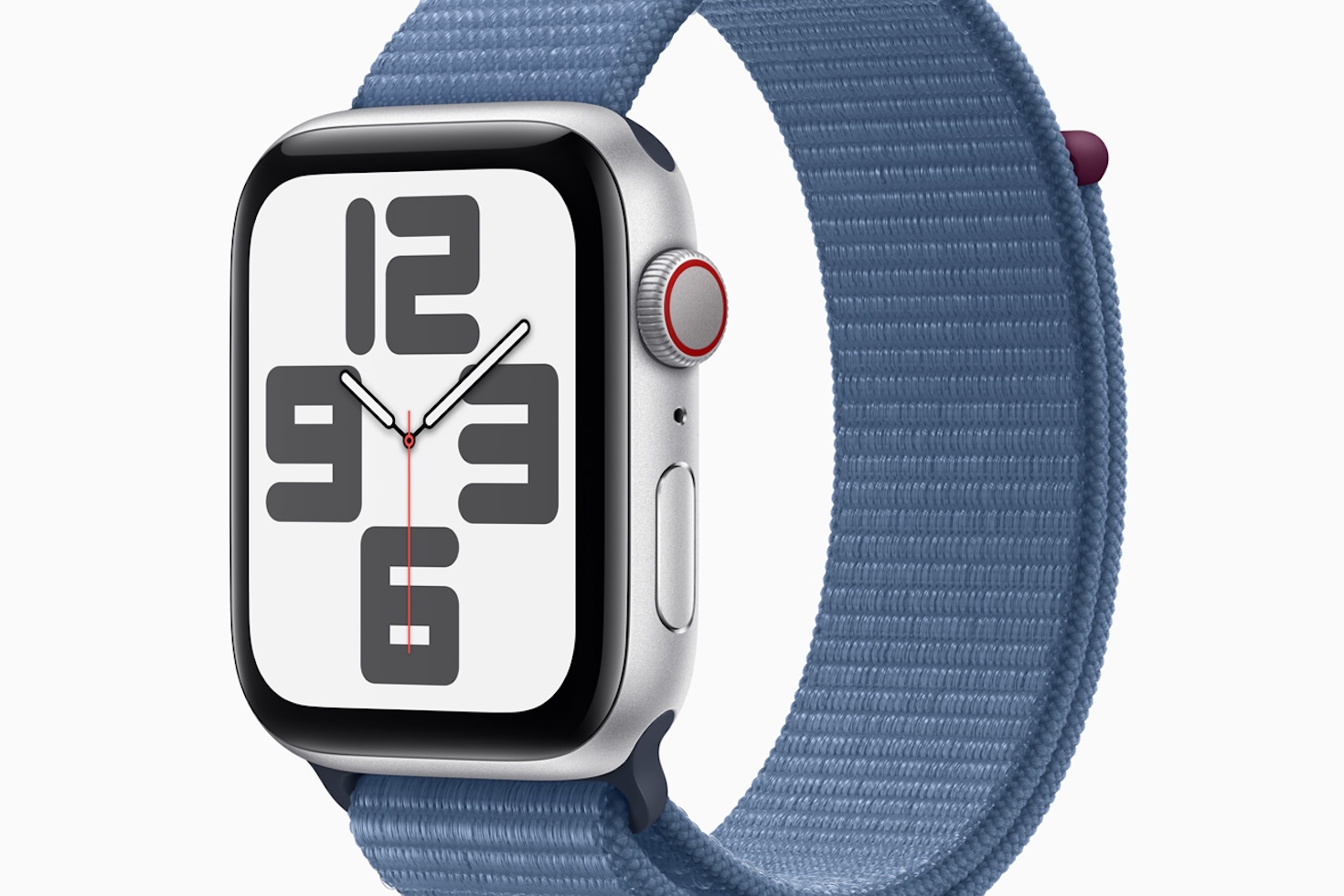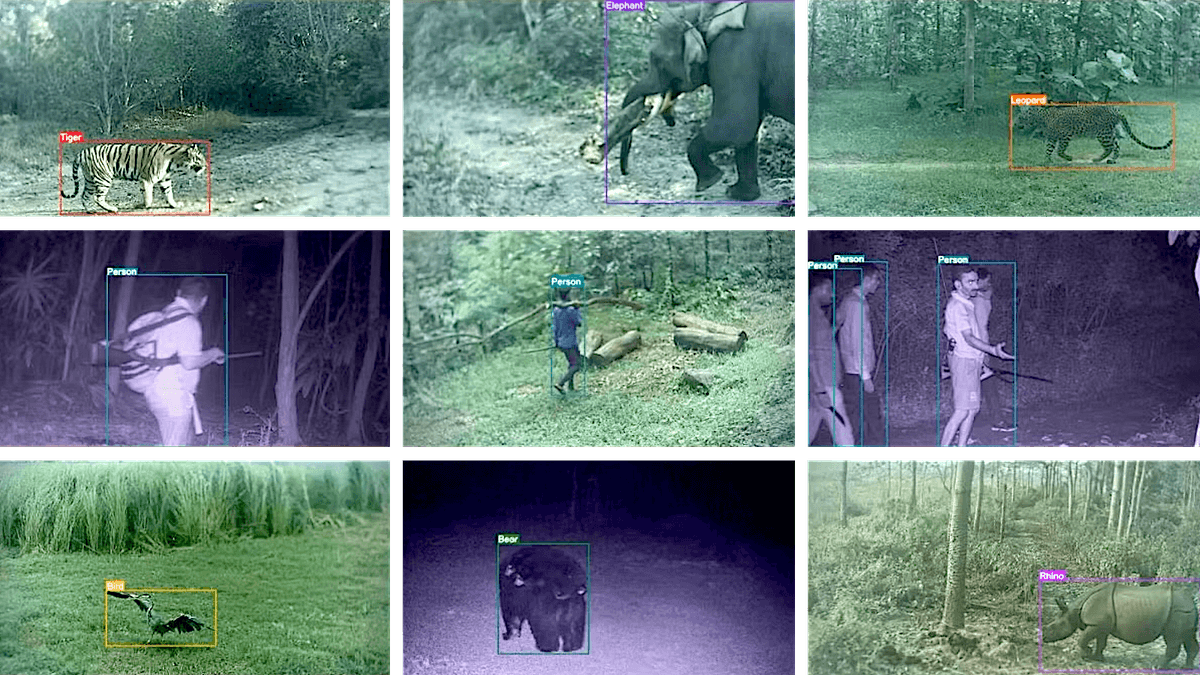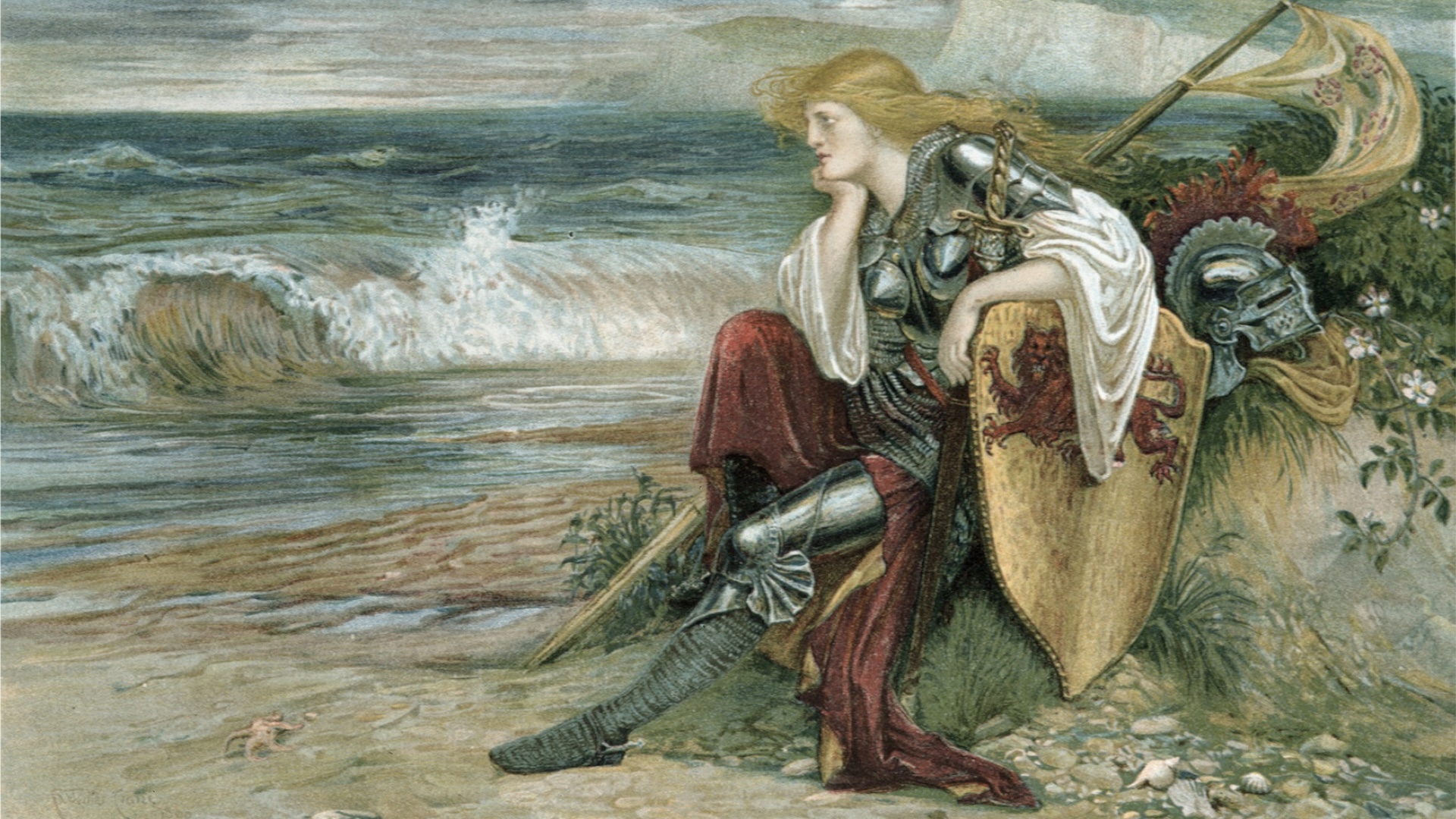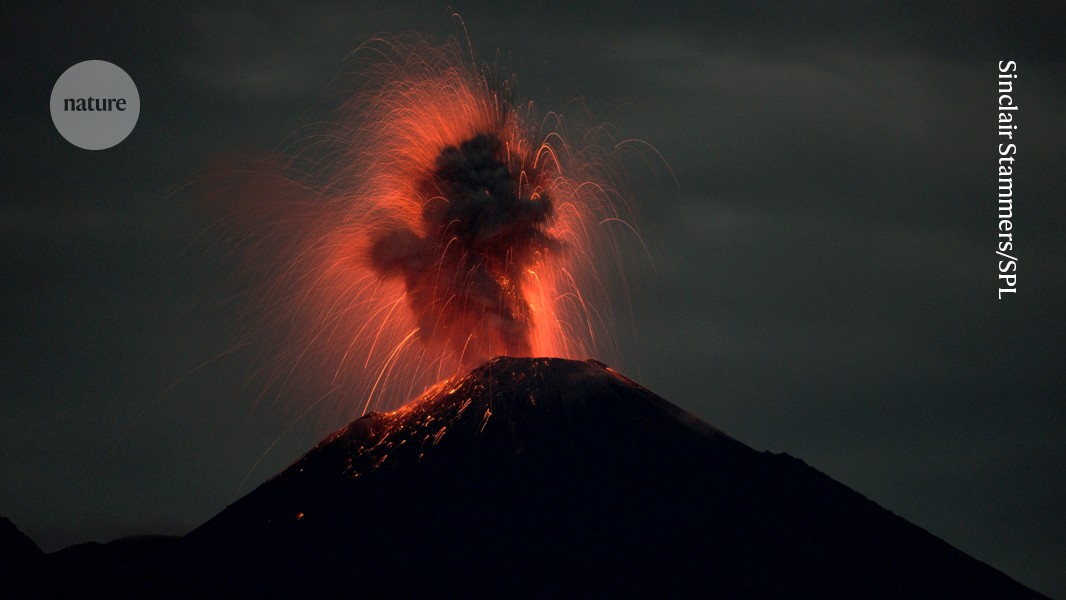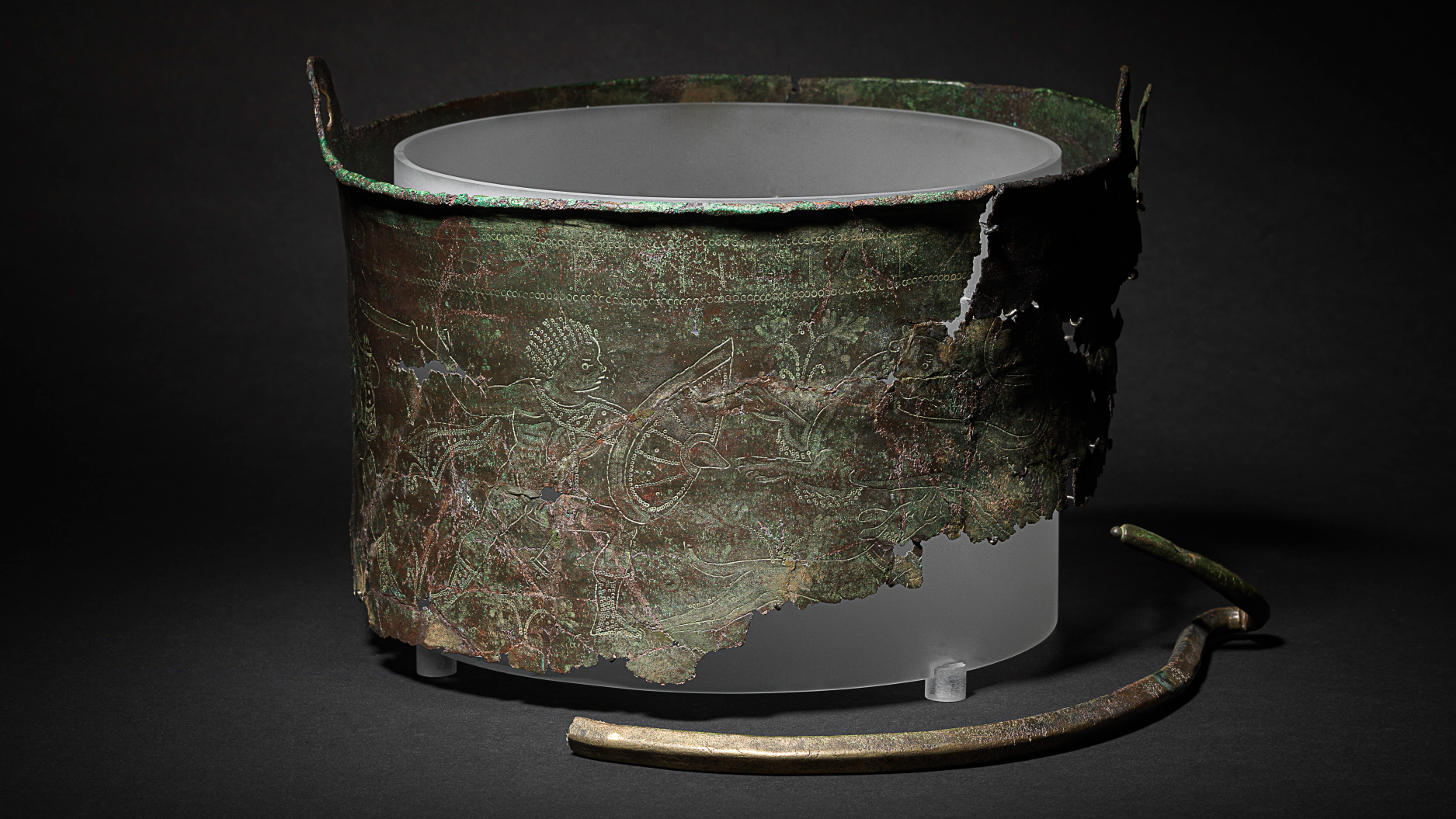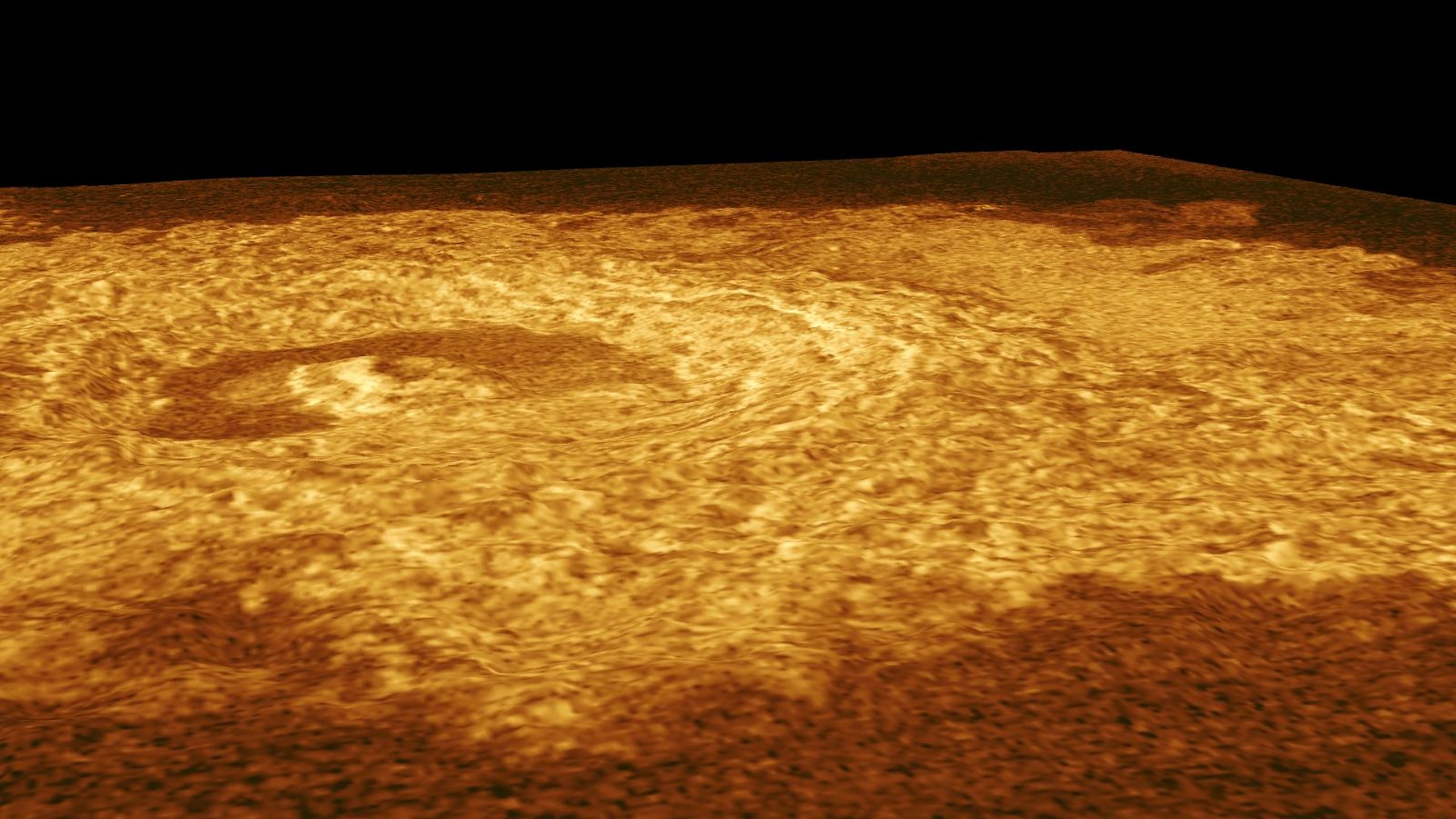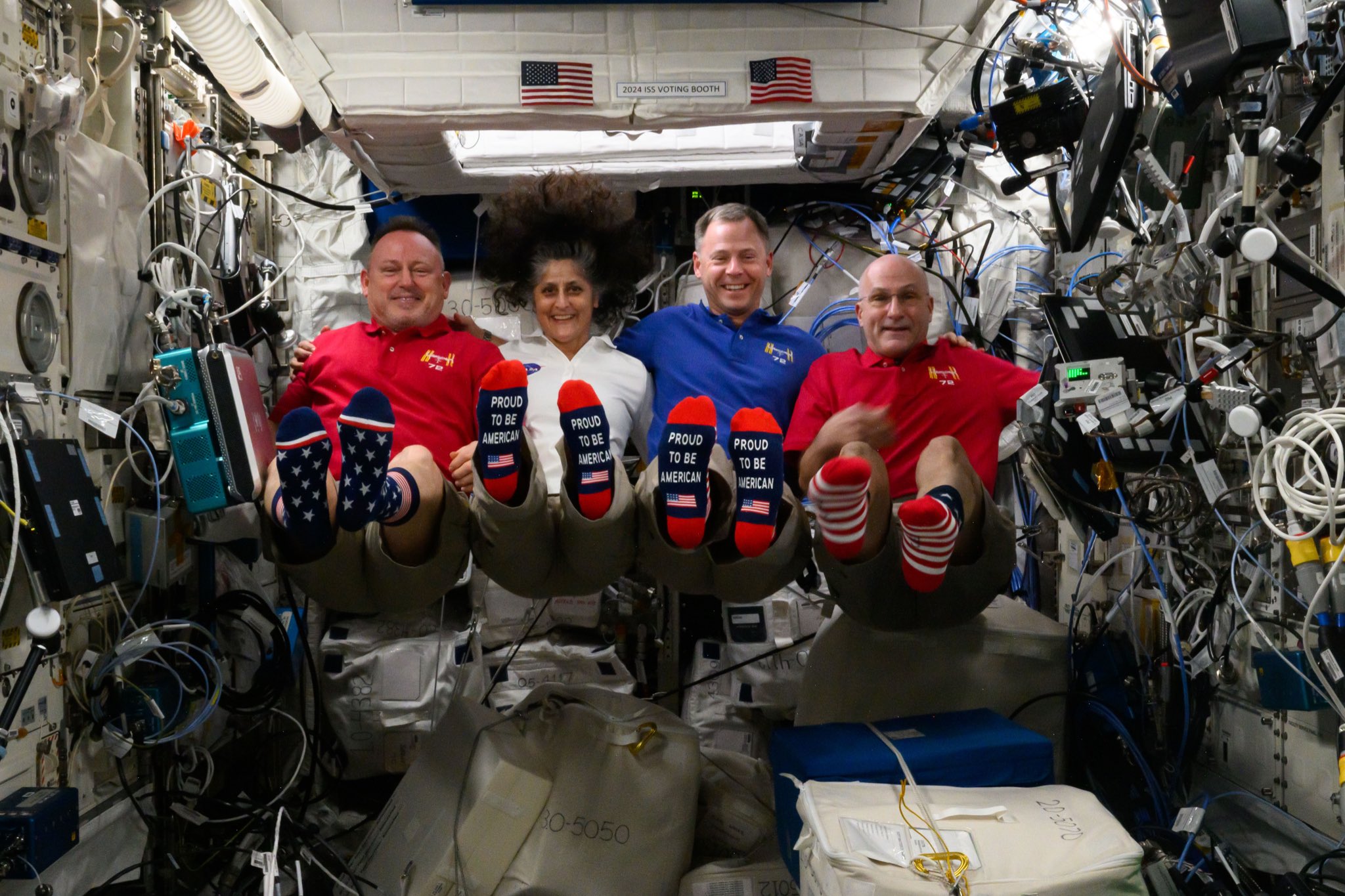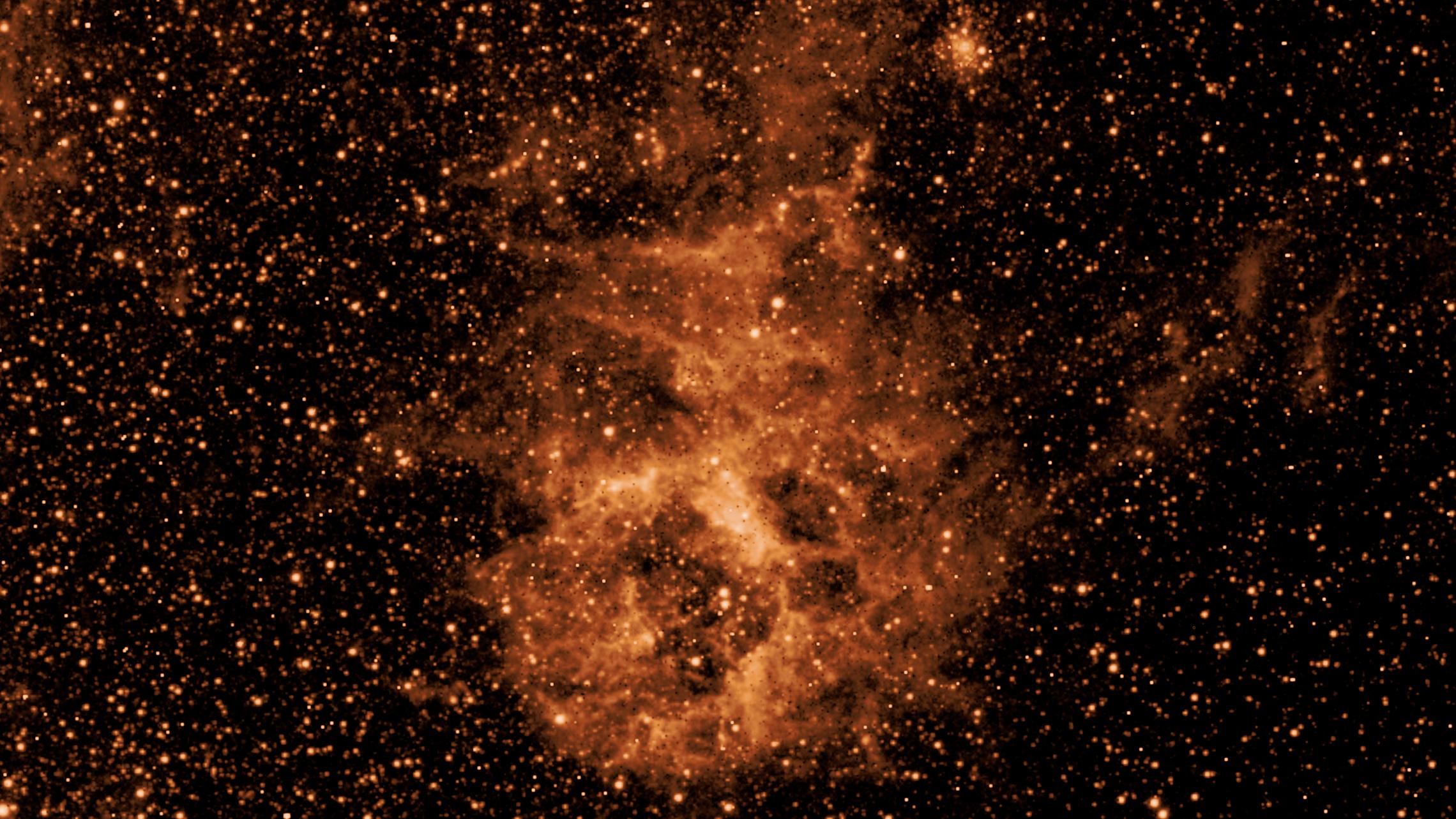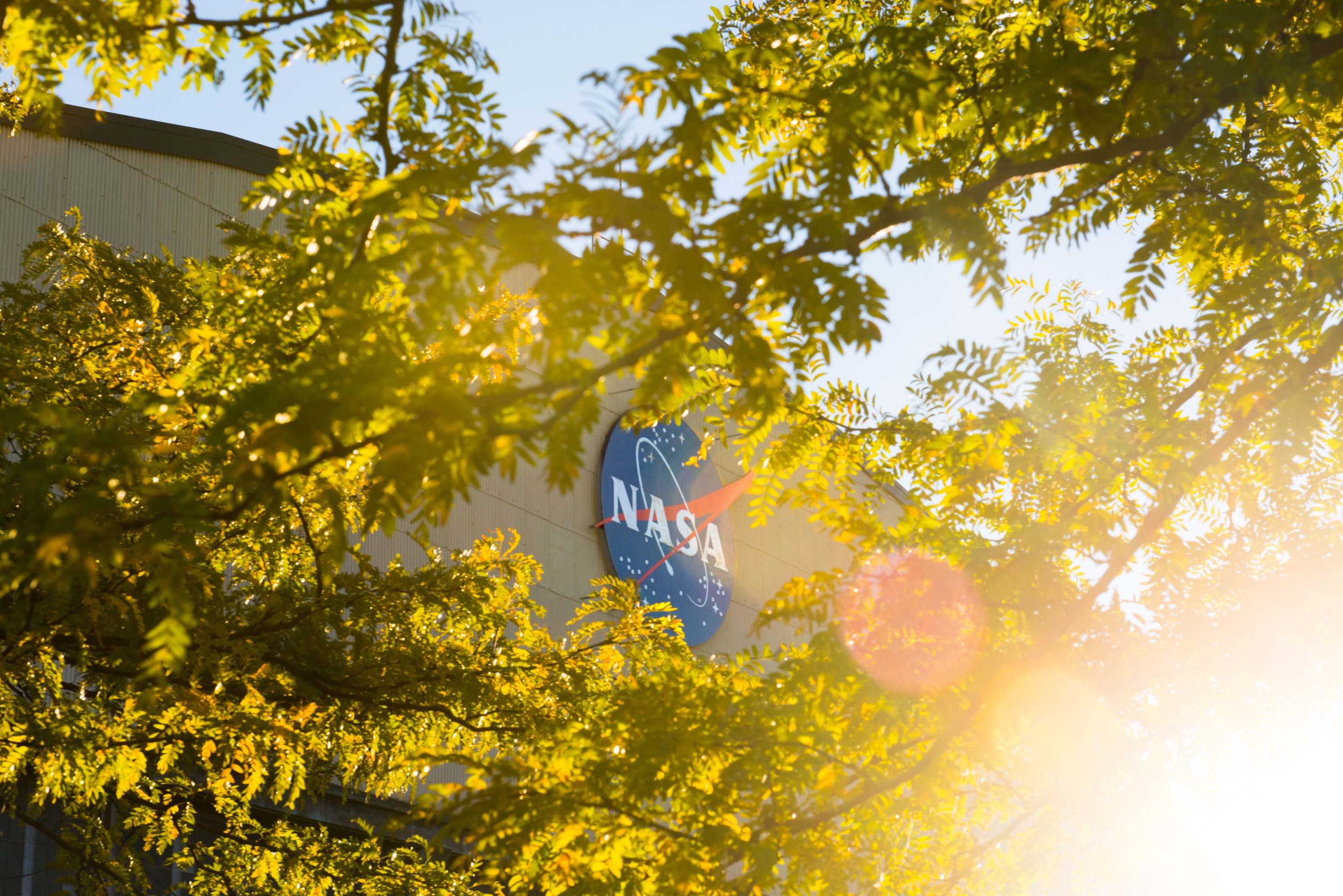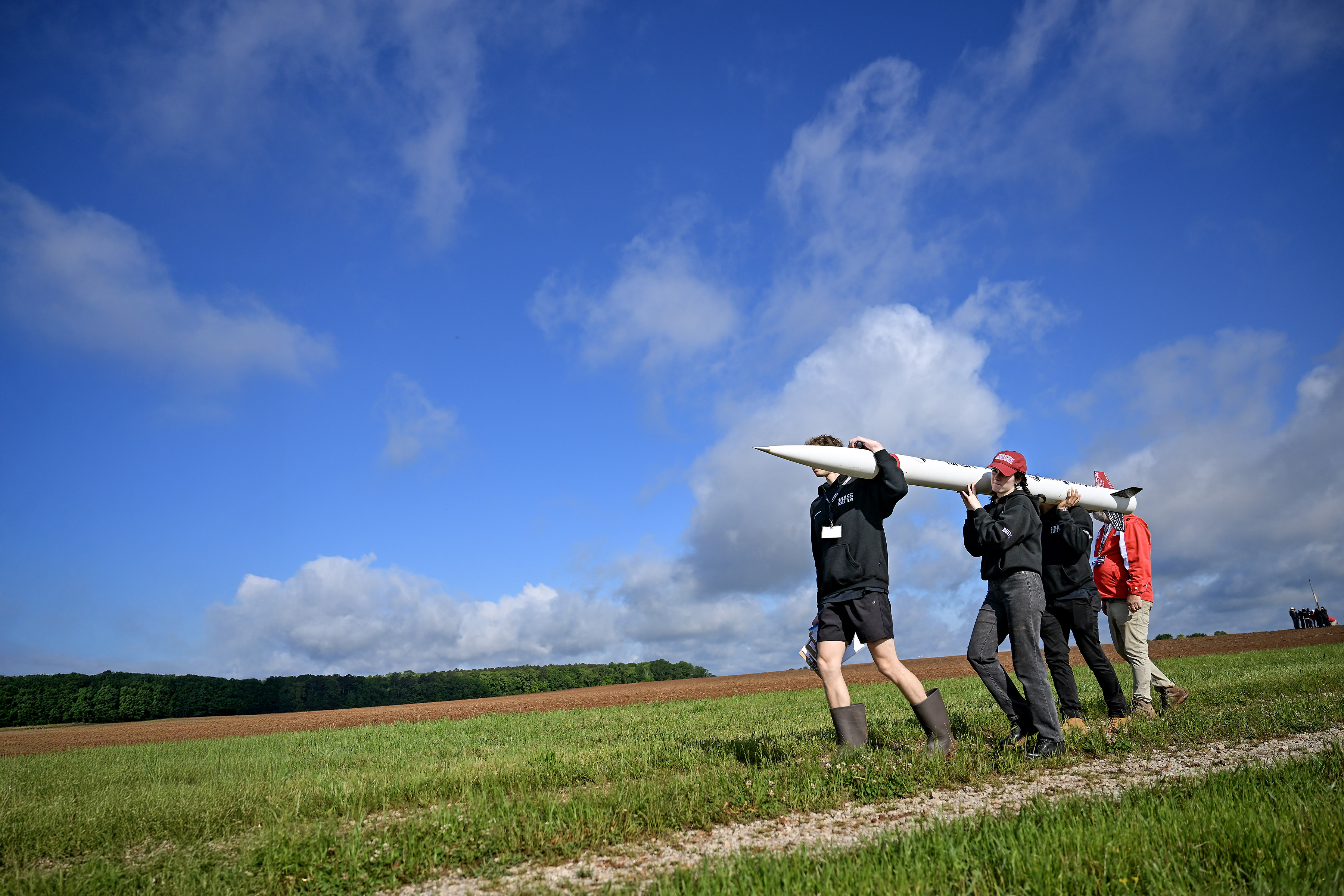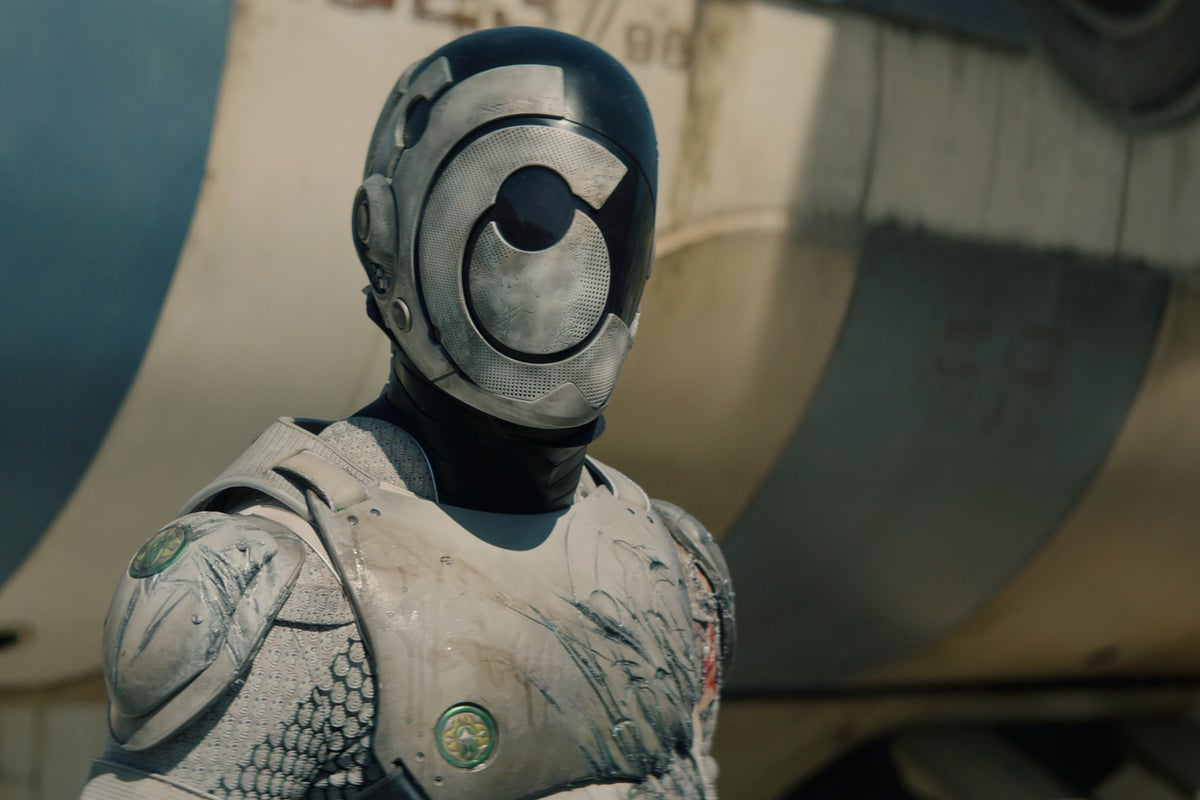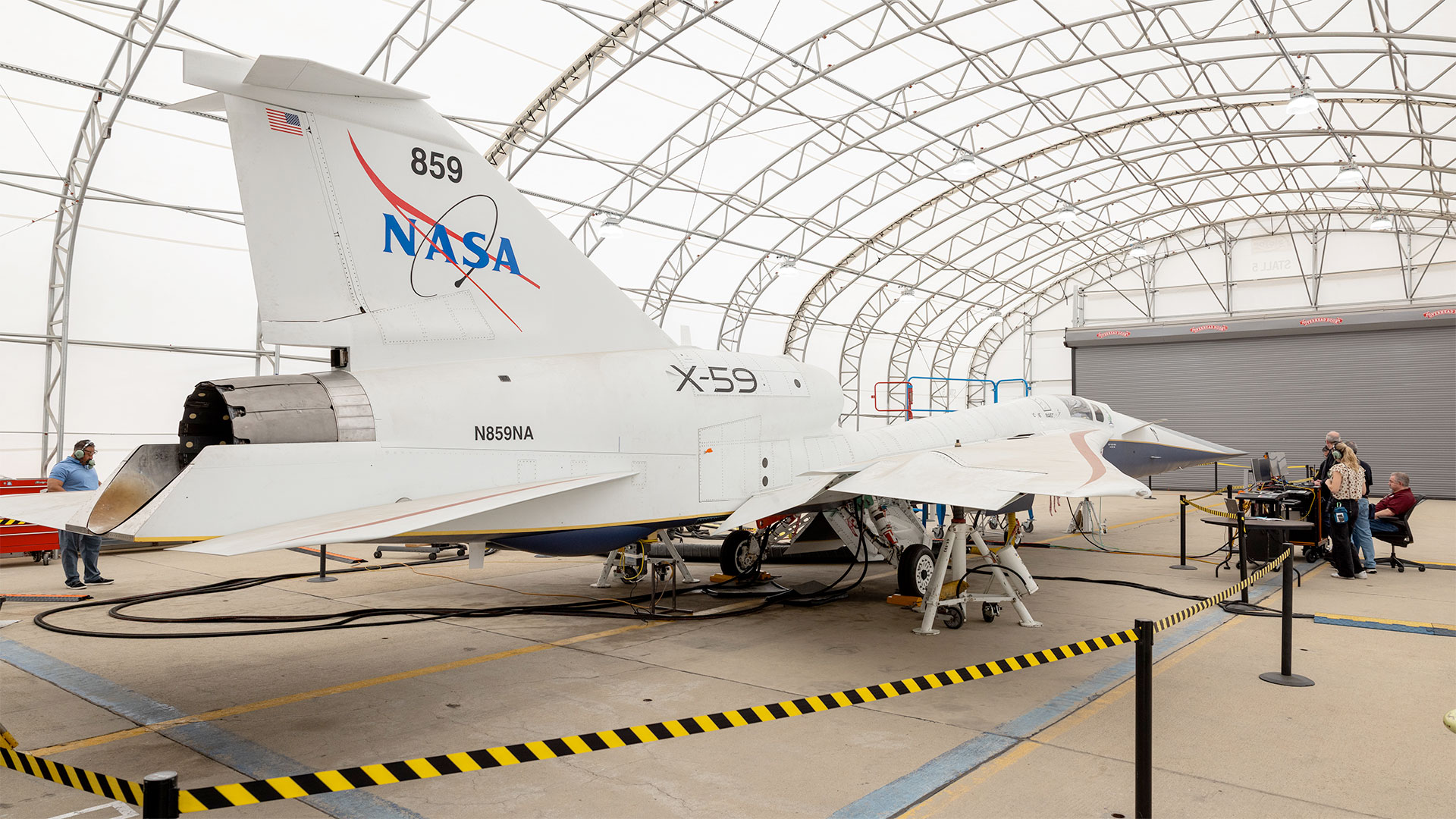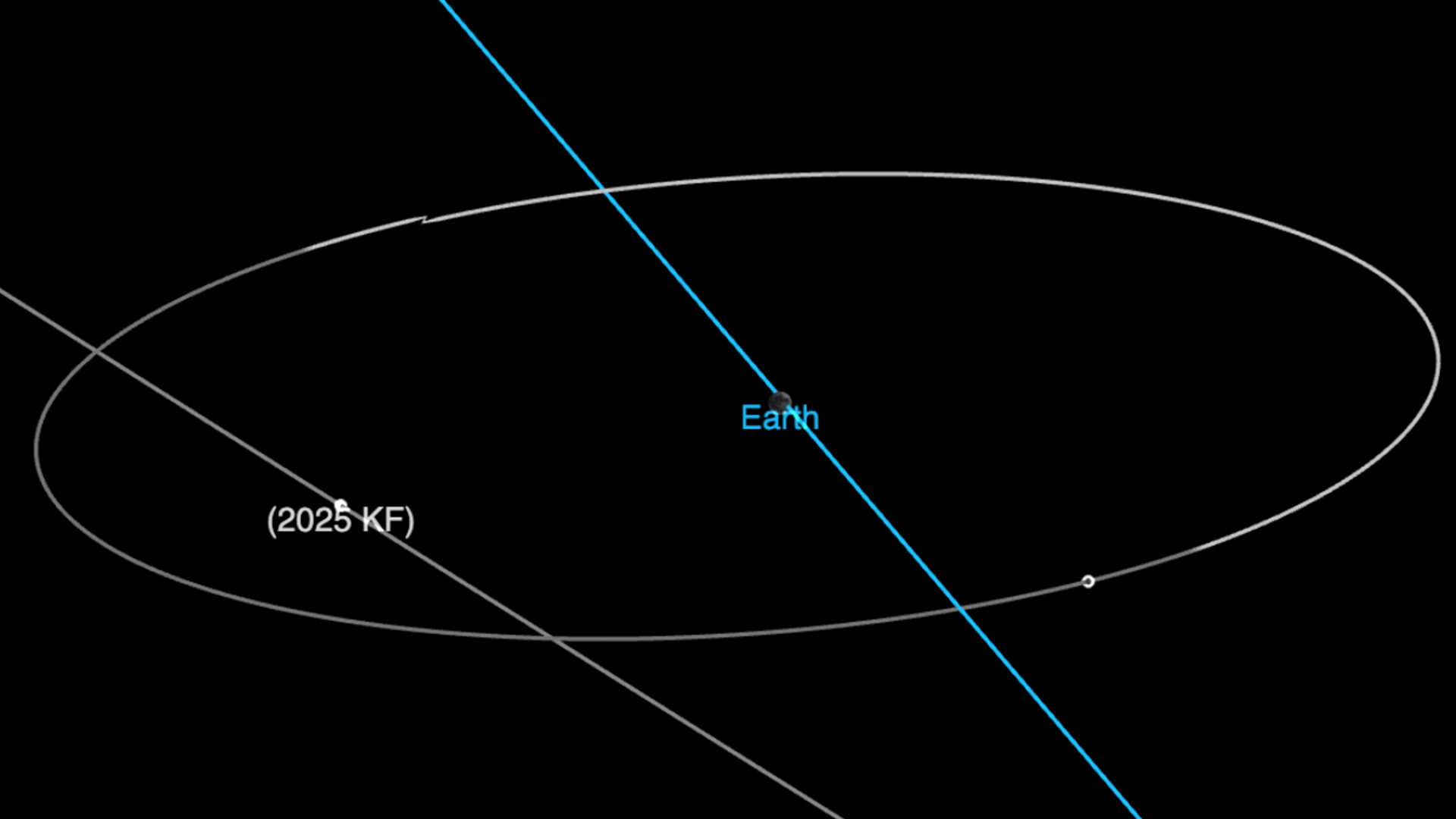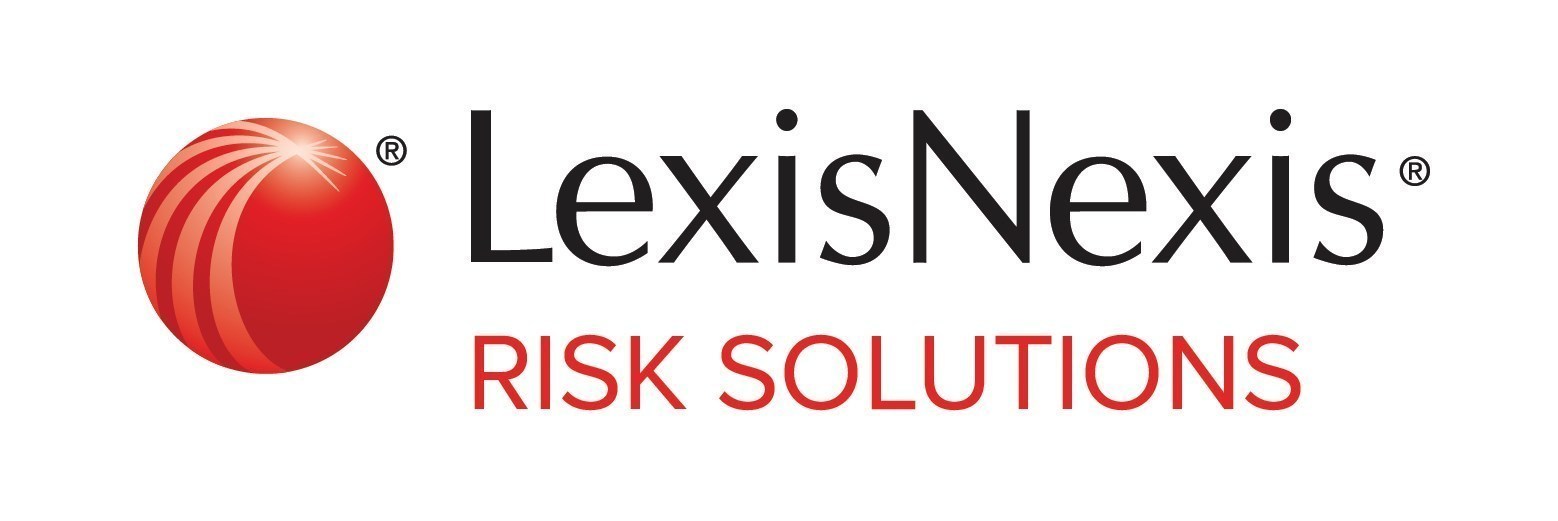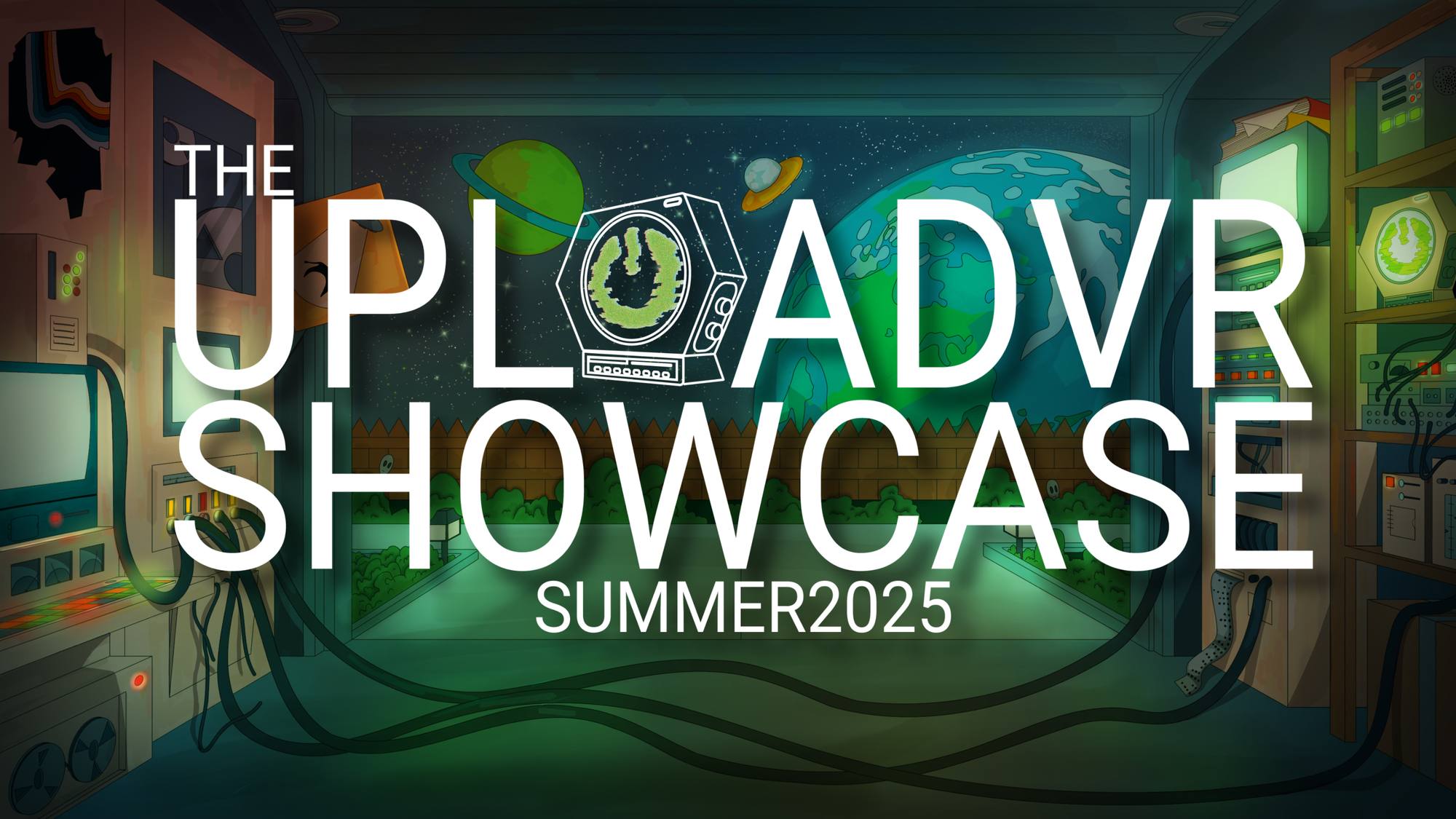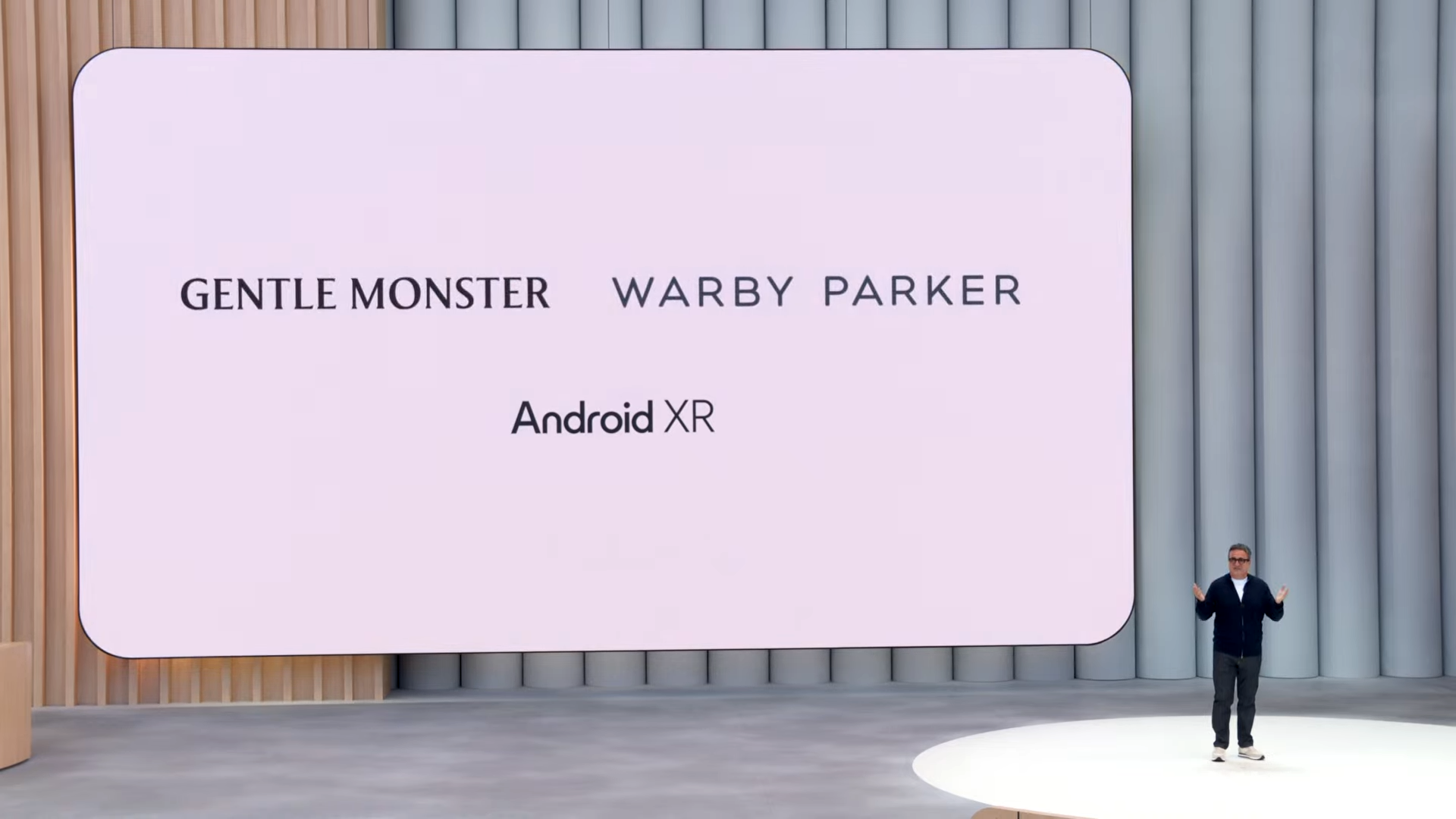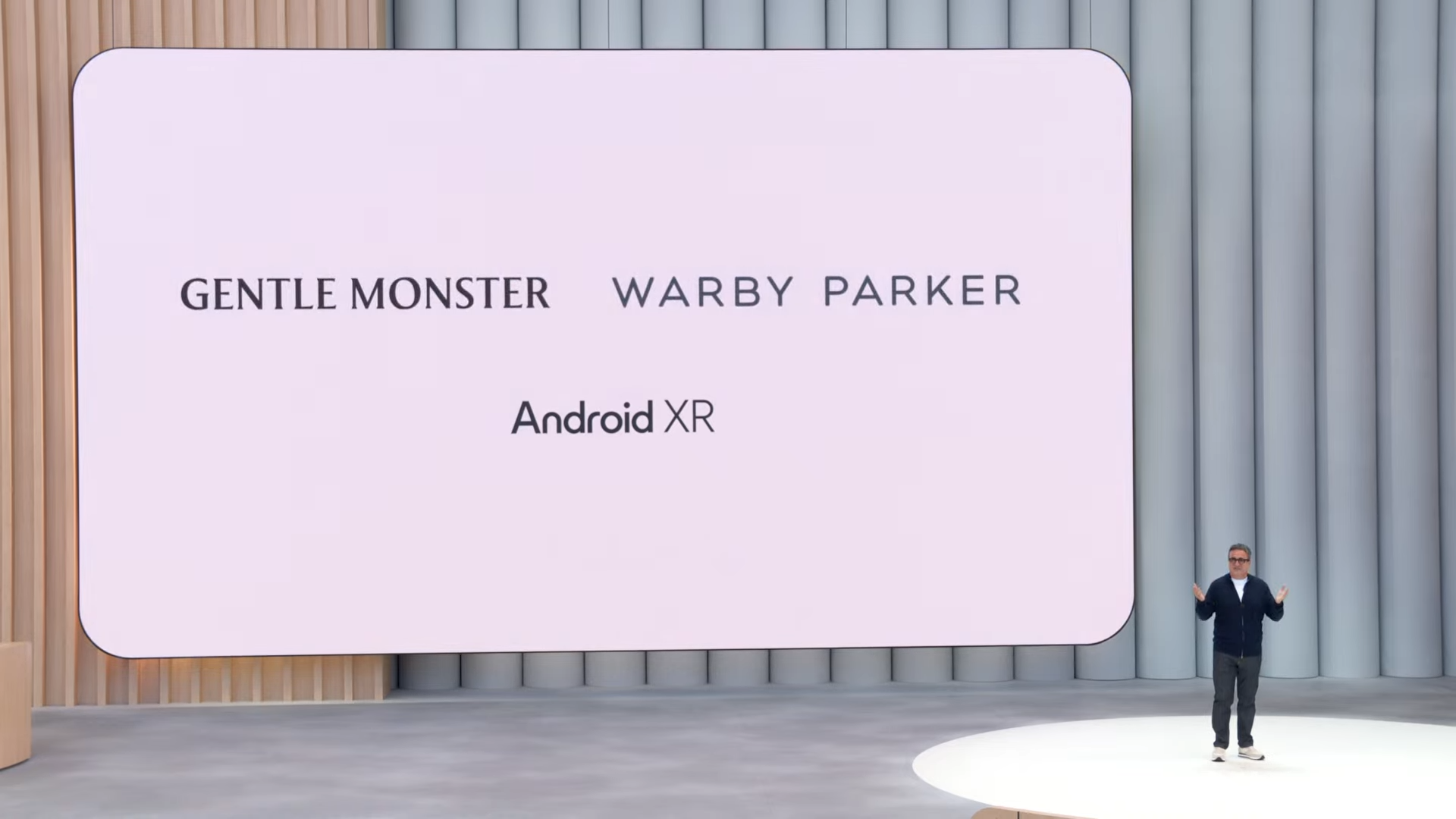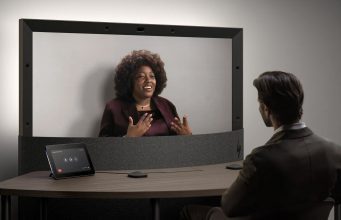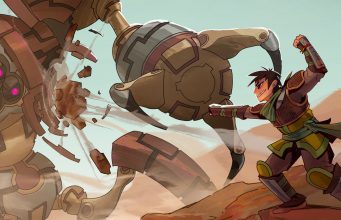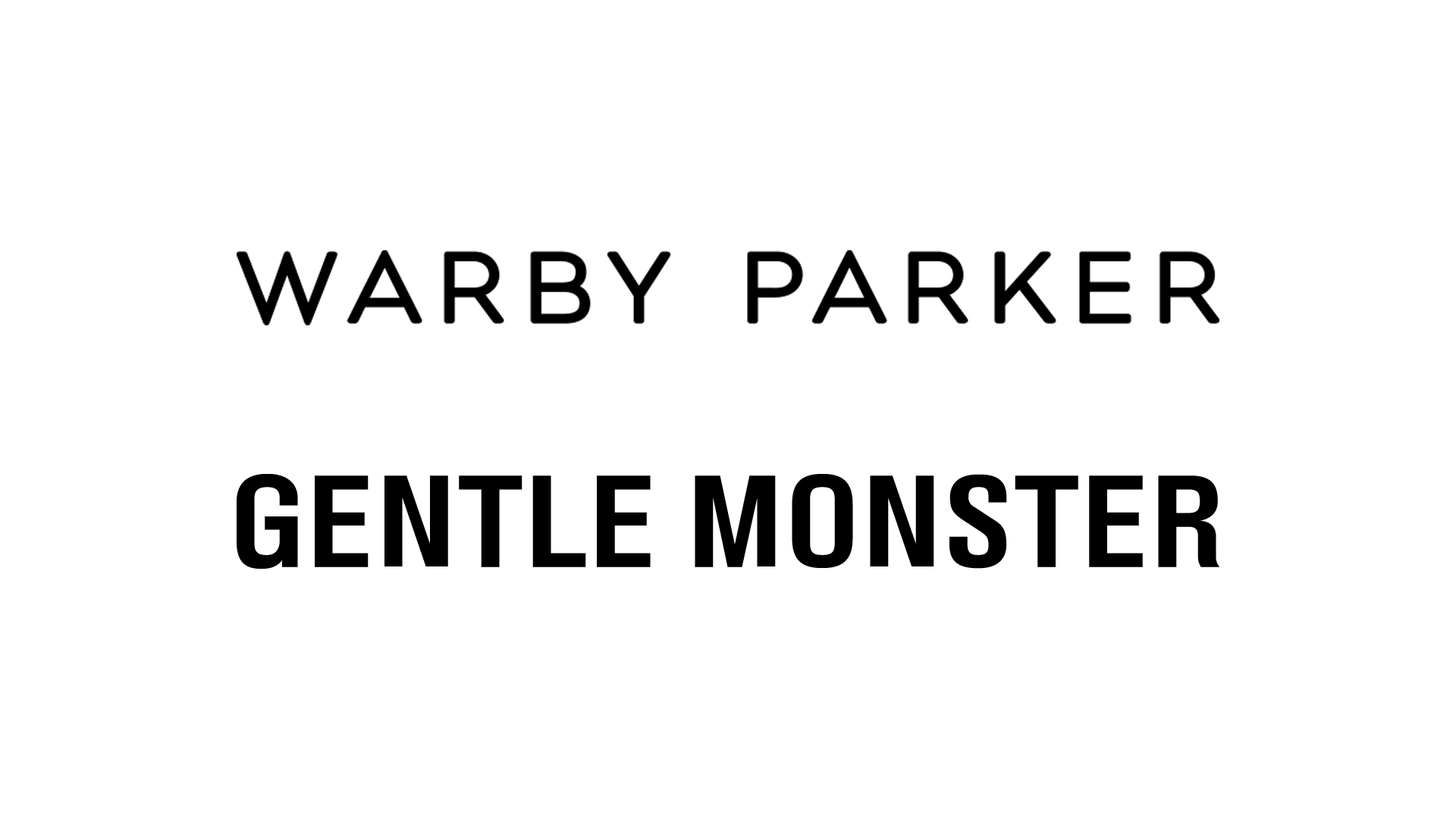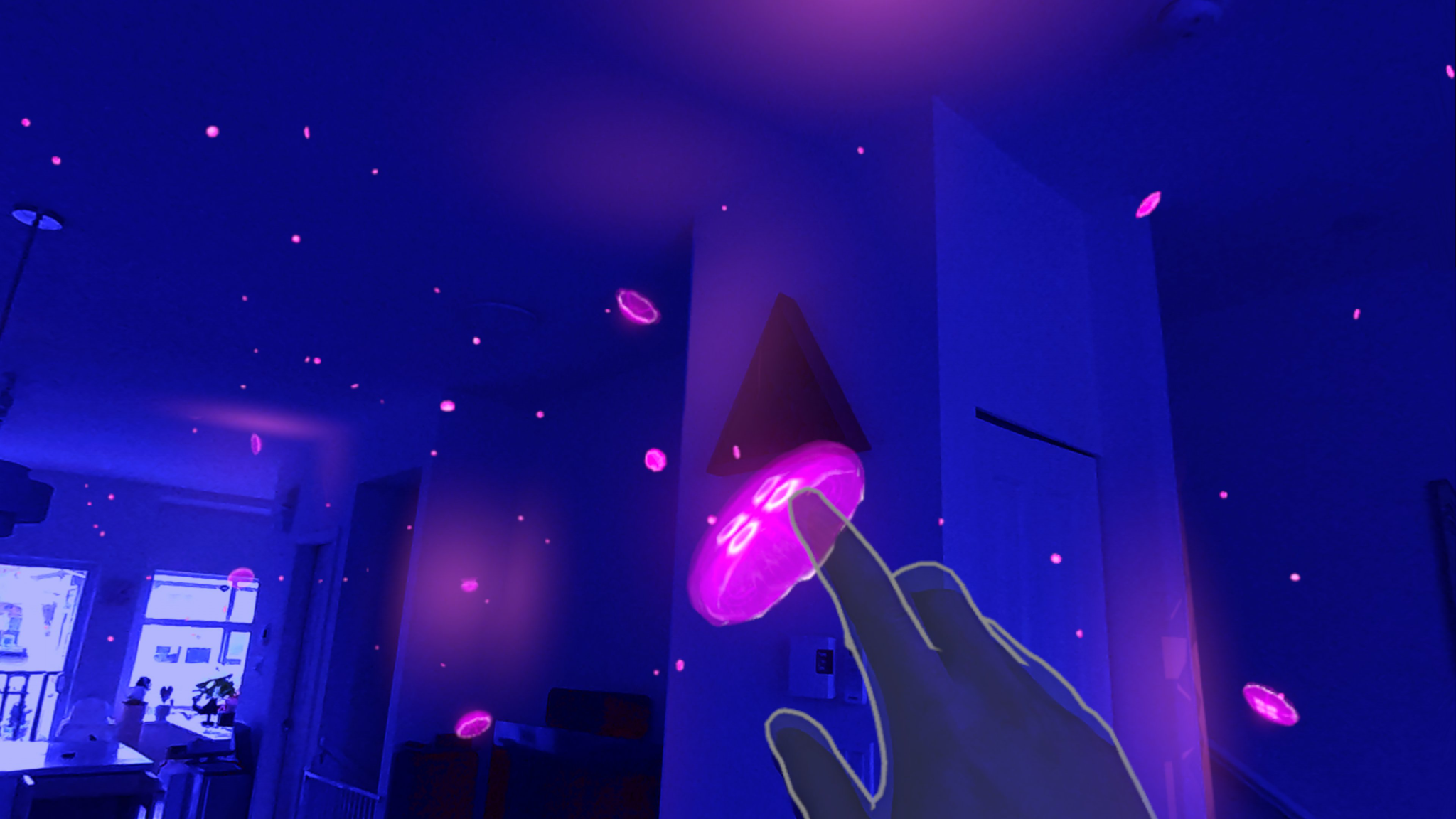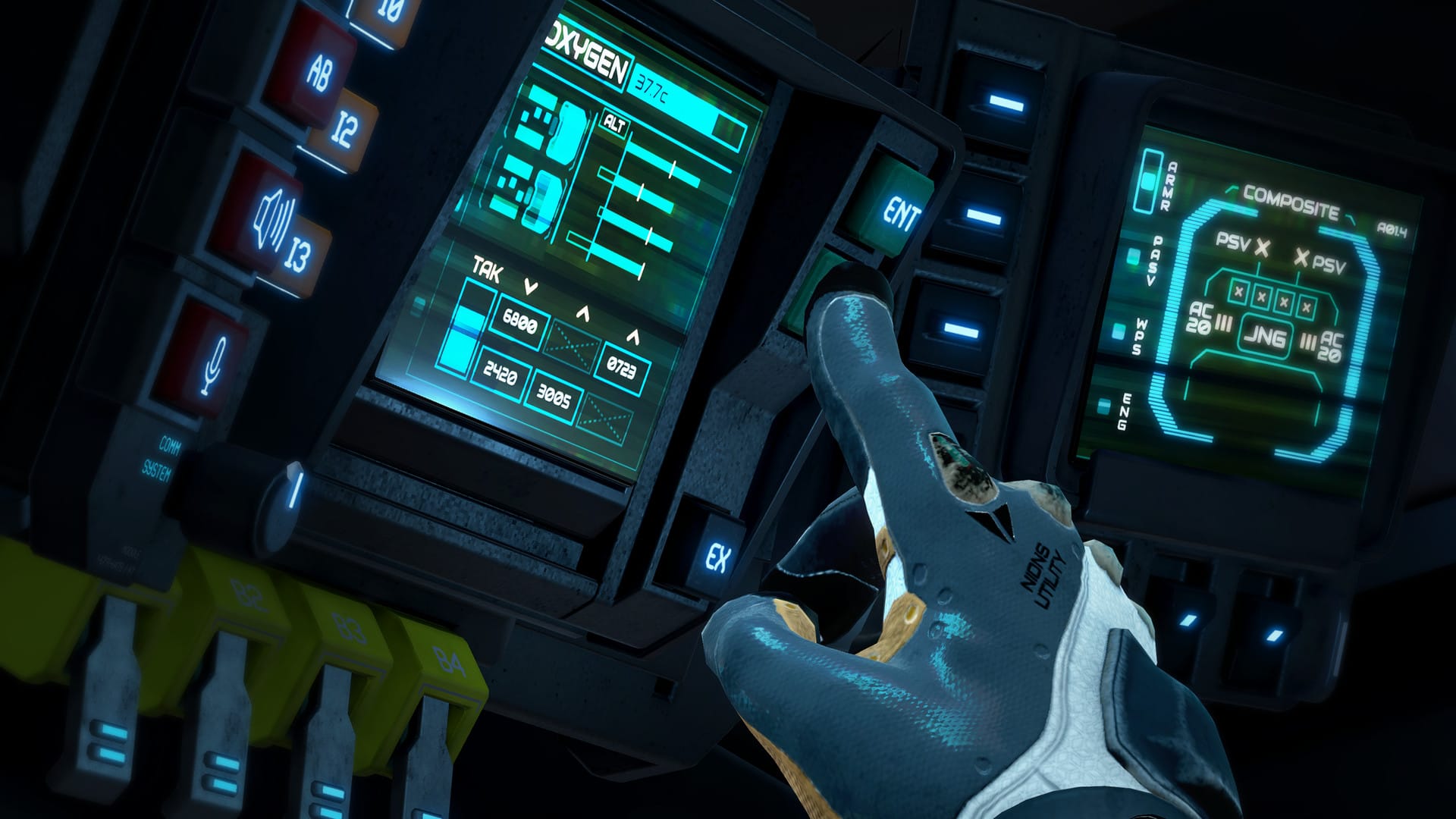Meta's "Cutting-Edge" Open-Source VR Game Demo Is A Mixed Bag
Meta released an open-source Quest VR game demo it describes as "a cutting-edge visual showcase", called North Star. But we found it to be a mixed bag.
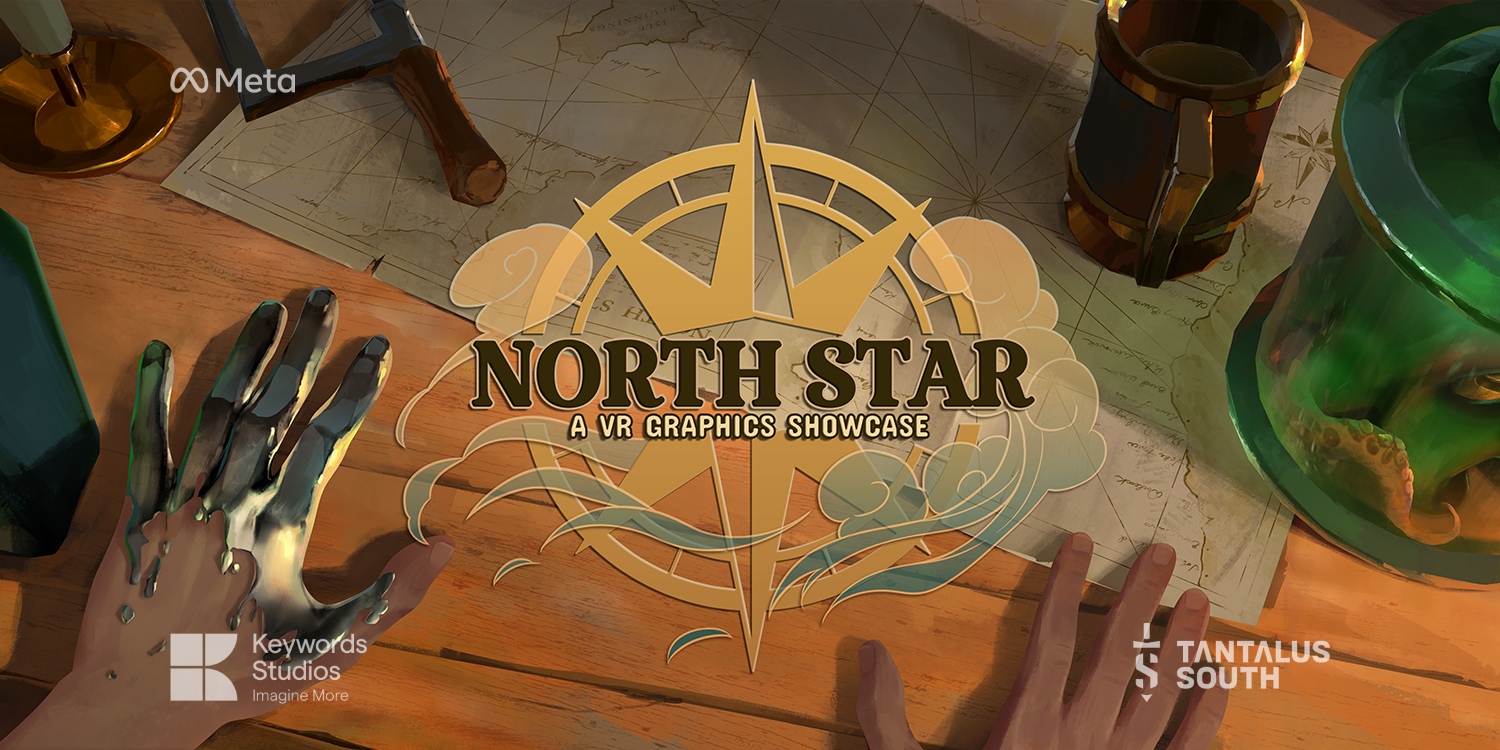

Meta released an open-source VR game demo that it claims is "a cutting-edge visual showcase for Meta Quest" with "stunning visuals that elevate the Quest’s graphical capabilities".
Called North Star, the roughly 20-minute experience sees you, a sailor stranded in the middle of the ocean in the Age of Sail, picked up by a ship and its crew to become the new deckhand and join them on an adventure.
As a showcase of the company's developer tools, North Star uses Application SpaceWarp, Meta XR Interaction SDK, and Meta XR Audio SDK. It supports both hand tracking and controllers, and you can switch between them at any time. Most importantly for developers, the source files for the Unity-made experience are all available on GitHub, under the MIT License. The only assets not present on GitHub are the original human voiceovers, with the repo instead having text-to-speech alternatives.
I won't critique the gameplay of North Star, because that's neither my area of expertise nor the point of an open-source tech demo. But I will criticize the graphics and technology, because "a cutting-edge visual showcase" with "stunning visuals that elevate the Quest’s graphical capabilities" are major claims.
Despite the use of AppSW, North Star simply does not have "cutting-edge" graphics. Titles like Batman: Arkham Shadow, Assassin's Creed Nexus, and Asgard's Wrath 2 look better, and there are indie titles that match it without AppSW. You may think I'm holding North Star to too high a standard. But it is Meta who decided to claim it has "stunning visuals that elevate the Quest’s graphical capabilities", not me.
There are also a number of puzzling technical decisions and oversights in North Star.
Your body and the held object exhibit heavy double-imaging whenever you're holding an object in one hand, for starters. It's tempting to blame this on AppSW, but it only happens in this circumstance. Worse, pick up the spyglass beside you, and you'll see the classic Unity judder associated with forgetting to preload a shader, the same you see when you fire the first shot in too many shooter games.
Further, right away you'll notice that your full-body avatar's feet are bolted to the ground, such that if you try to walk around the wooden platform you're on, the body will awkwardly skew in the direction you move. In a few scenes your feet will move, while in others they're also locked in place. Did the developers only test this seated?
When you're on the ship, if you're on a Quest 3 you'll notice that shadows and some other effects don't render at the very edge of your view. I'm guessing that the developers hardcoded the field of view of the narrower Quest 3S & Quest 2 lenses for shadow culling. Again, not a great sign for a showcase.
North Star's on-by-default captions are an interesting approach to captioning in VR, appearing above the head of a character. But the flaw is immediately obvious when characters are behind walls, as it results in a depth conflict (which gives many people eye strain). The solution here should be to move the captions to slightly in front of the nearest wall.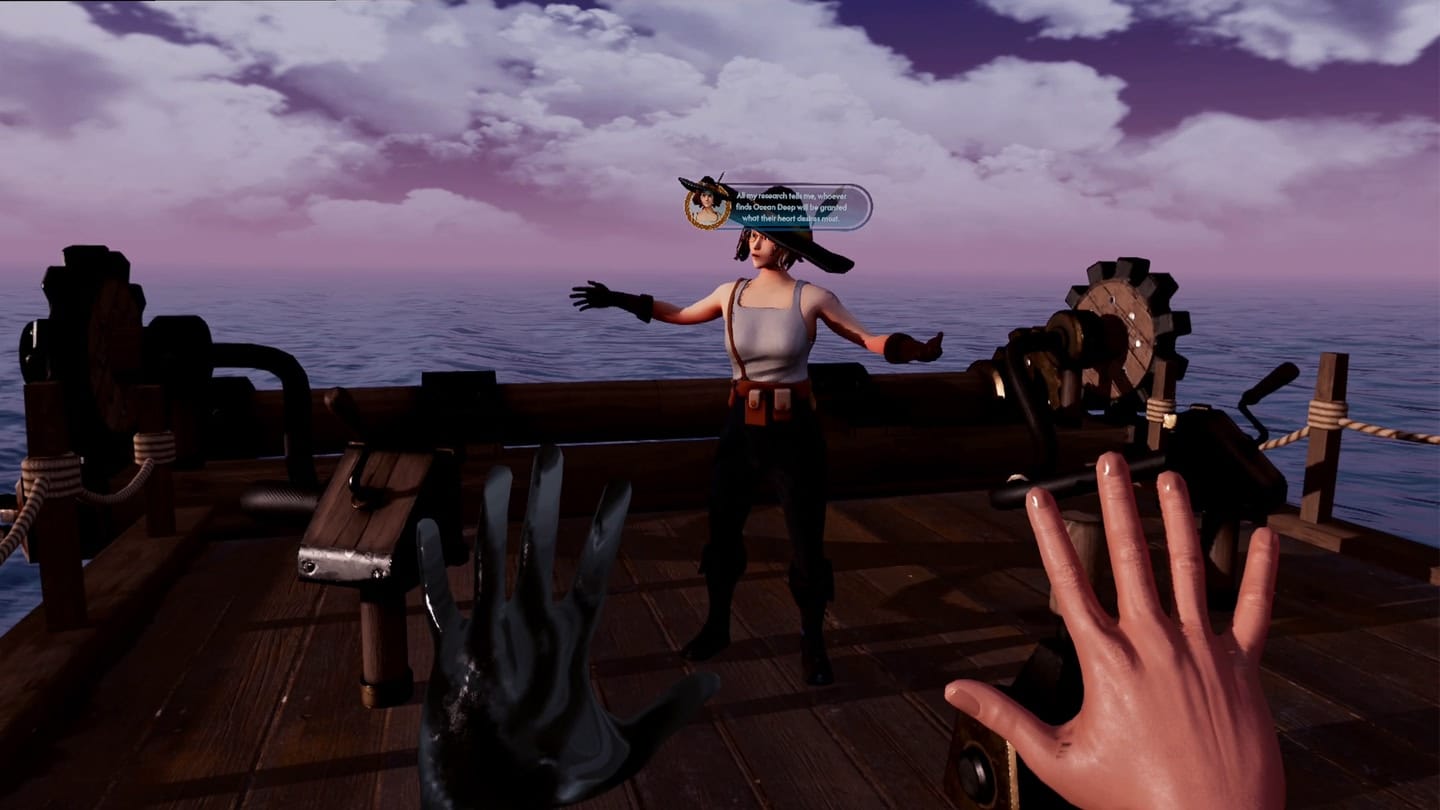
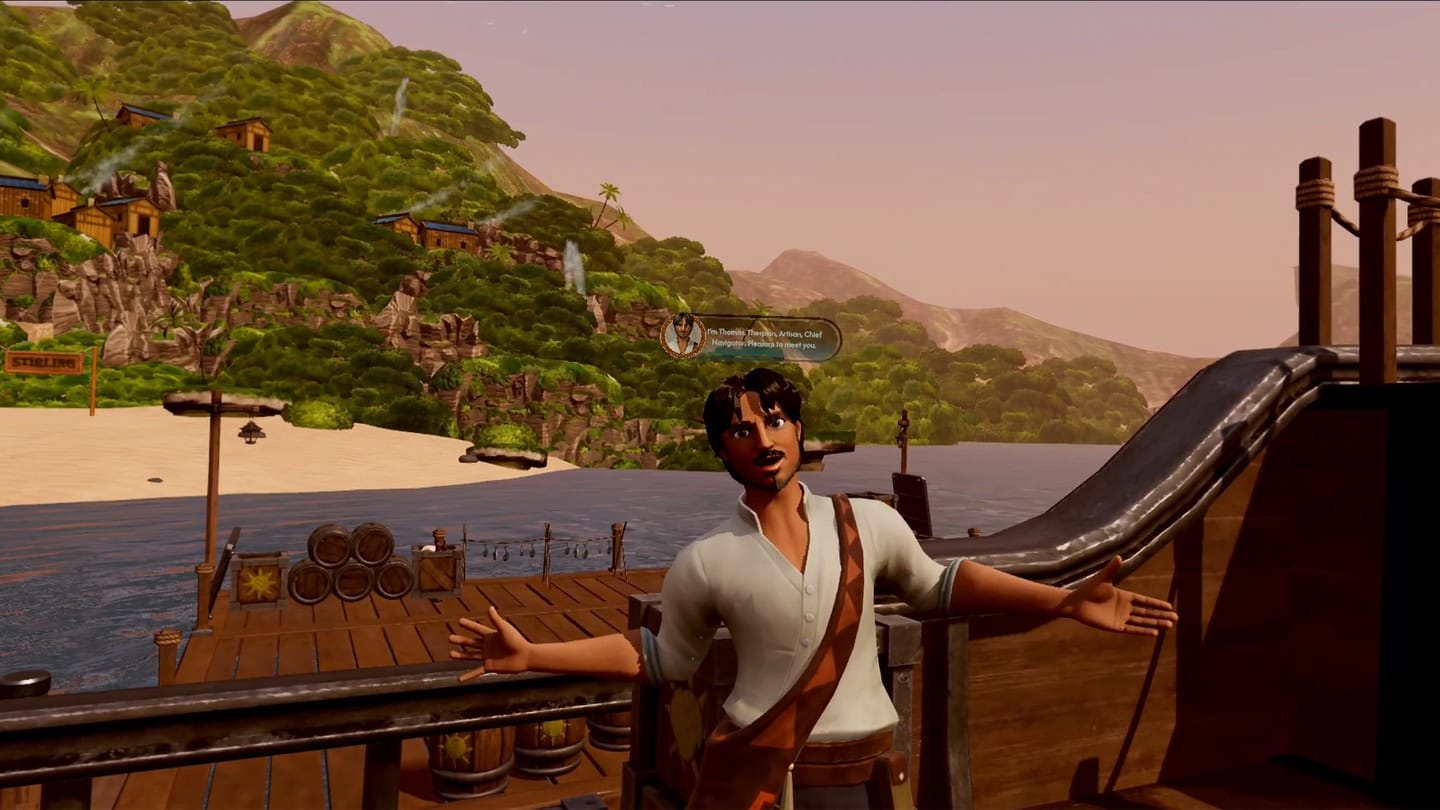
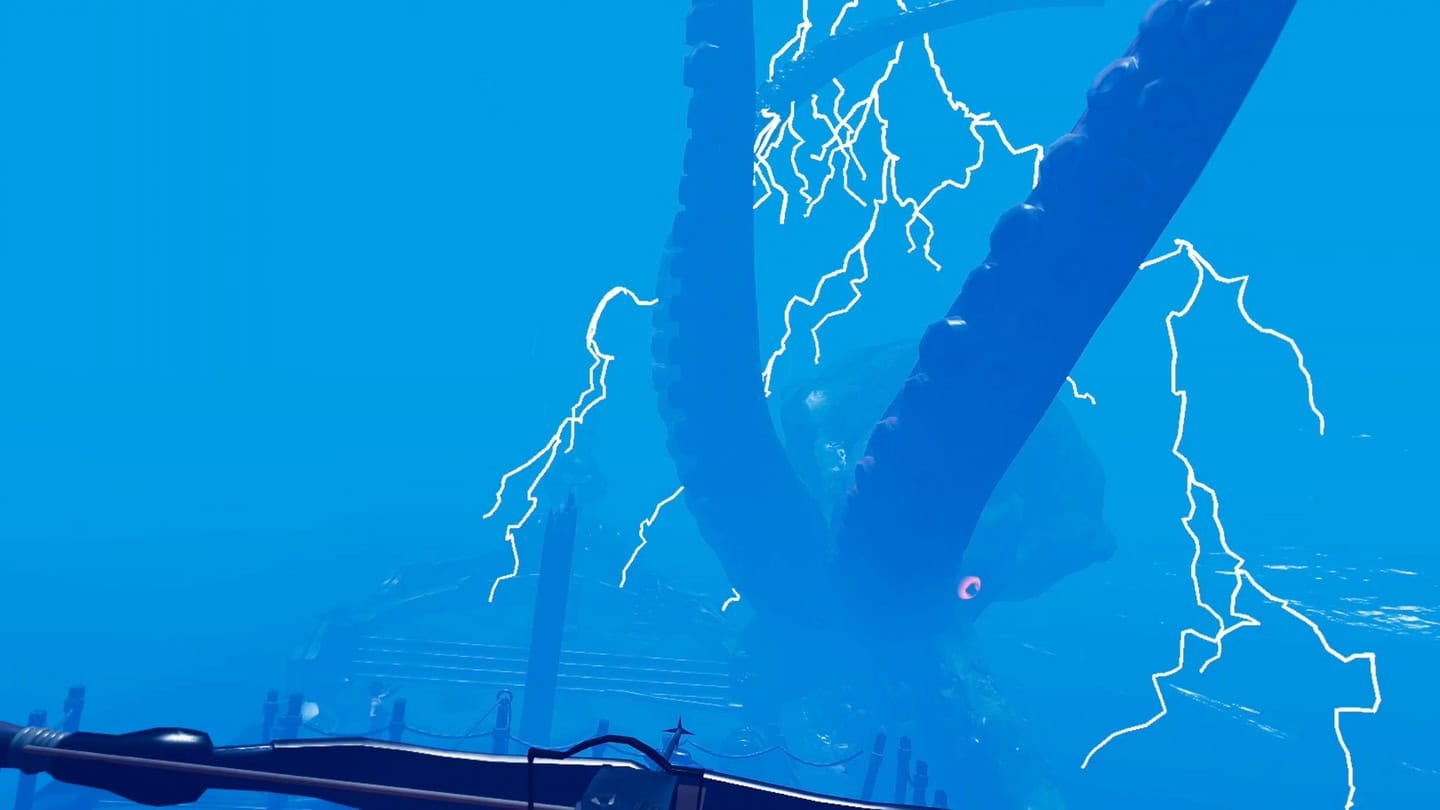
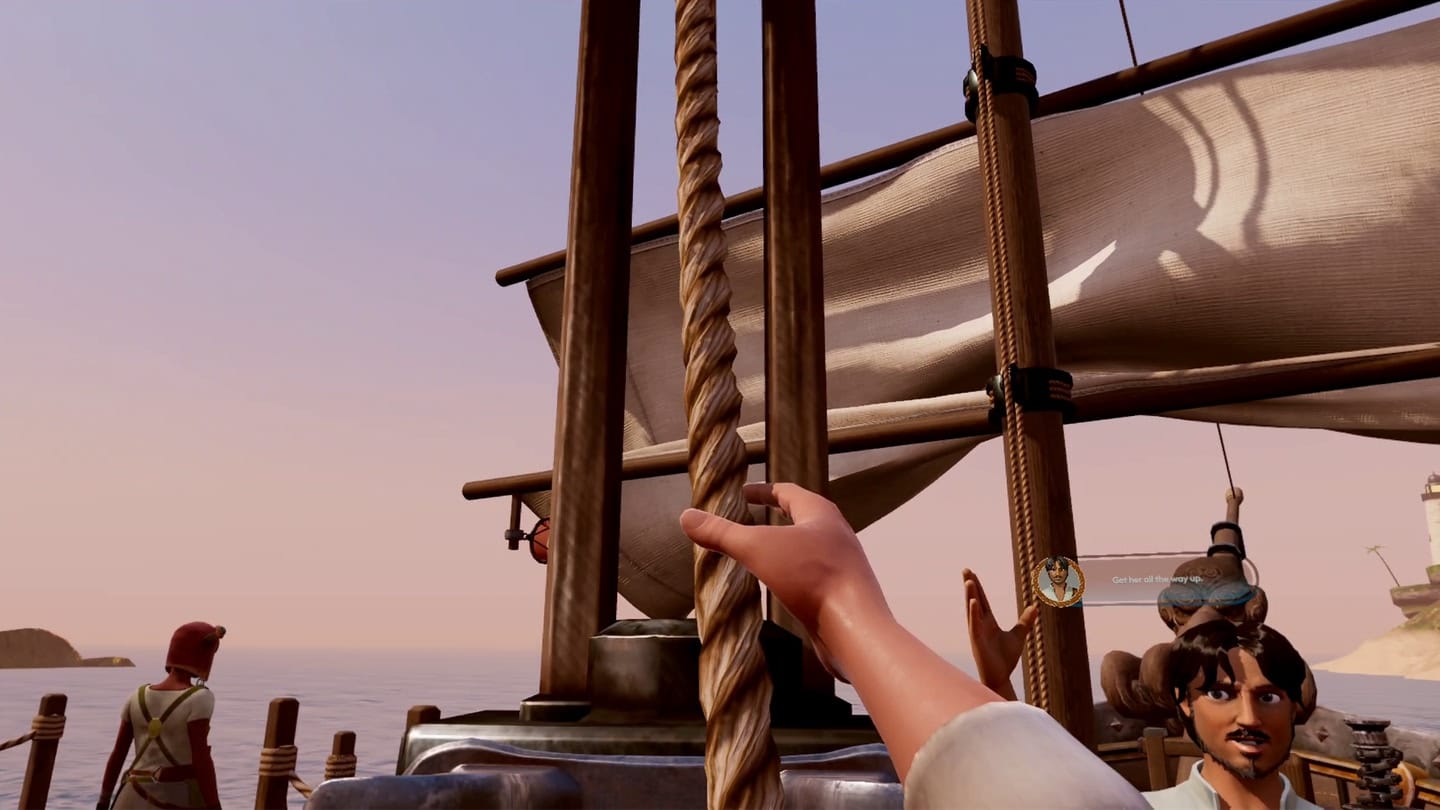
North Star isn't all bad, though, and much of its technology is rather advanced. It has fully dynamic lighting, including high-quality reflections and real-time shadows, and this is used to transition between times of day. The ocean is also impressive for standalone VR; it's a simulated system that can render anything from calm seas to rough storms. It's just not clear whether all this is a sensible choice for today's standalone VR, where baked lighting can deliver much smoother results.
Further, North Star's interactions are generally excellent, including the most realistically simulated rope physics I've ever seen on standalone VR. This isn't just your classic "pull the rope down" system; it has you intricately tie the rope around cleats. Interactions with cranks, levers, and the captain's wheel are also well polished. The harpoon is more of a mixed bag, like North Star itself, with its crank working well but its button lacking feedback.
An open-source demo of this scope and scale, with this many interactions and subsystems, is a resource that many VR developers will find deeply valuable, despite some notable flaws. North Star is available for free for Quest owners on the Meta Horizon Store, and almost all the source files are available on GitHub for developers.
Am I being too harsh on North Star, or do you agree it fails to match up to its marketing? Give it a try on your Quest and let us know in the discussion section below.

